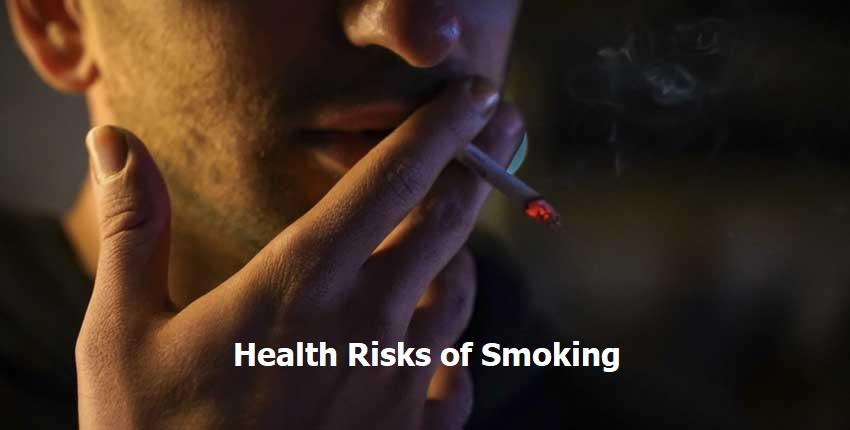Cigarettes
Health Risks of Smoking in Canada: Why You Should Quit Today
Discover the Health Risks of Smoking in Canada. Smoking is a major health issue in Canada. It causes thousands of preventable deaths yearly. Despite strict tobacco rules, many Canadians smoke. They use brands like Du Maurier, Players, and BB Cigarettes. Knowing the health risks of smoking in Canada is key. This blog explores these risks. It uses Canada-specific data. Additionally, it shows why quitting is vital. You’ll also see the benefits of a smoke-free life.
Must Read: Steps to Help Quit Smoking in Canada
Why the Health Risks of Smoking in Canada Matter
Canada has reduced smoking rates. For example, the Canadian Tobacco Strategy aims for 5% usage by 2035. However, Statistics Canada reports 45,000 tobacco-related deaths yearly. This makes smoking the top preventable death cause. Whether you smoke Belmont or DK’s Cigarettes, risks are serious. These dangers affect smokers and non-smokers through secondhand smoke. Therefore, let’s examine the health risks. We’ll also see why quitting saves lives.
Buy Cigarettes OnlineMajor Health Risks of Smoking in Canada
1. Lung Cancer and Respiratory Diseases
Smoking causes most lung cancer cases in Canada. The Canadian Cancer Society says it’s 85% of cases. Cigarette chemicals like tar harm lungs. Moreover, smoking leads to chronic obstructive pulmonary disease (COPD). COPD includes emphysema and bronchitis. It causes breathing issues and chronic cough. Additionally, smokers face higher asthma risks. They also get infections like pneumonia more often. In fact, the Canadian Lung Association notes 72% of lung cancer deaths are smoking-related. That’s over 20,000 new cases yearly.
2. Heart Disease and Stroke
Smoking severely impacts heart health. Cigarette chemicals like nicotine strain the heart. For example, they reduce oxygen in the blood. They also raise blood pressure. As a result, smokers are 2–4 times more likely to have heart attacks. Strokes are also more common. Health Canada confirms this risk. Furthermore, the Heart and Stroke Foundation says smoking causes 30% of cardiovascular deaths in Canada.
3. Other Cancers Linked to Smoking
Smoking causes more than lung cancer. It leads to mouth and throat cancers. For instance, smoking Export A increases this risk by 10 times. The Canadian Cancer Society reports this. Additionally, smoking causes esophageal and pancreatic cancers. It also affects the bladder and cervix. Even occasional smoking raises risks. In fact, Cancer Care Ontario says 30% of cancer deaths in Canada are tobacco-related.
4. Weakened Immune System
Smoking weakens your immune system. It makes infections more likely. For example, smokers often get pneumonia. They also catch bronchitis more easily. Moreover, wounds heal slower in smokers. This is due to poor blood flow. During the COVID-19 pandemic, Health Canada noted higher risks for smokers. They faced worse respiratory infections as a result.
5. Premature Aging and Skin Damage
Smoking affects your appearance. Nicotine reduces blood flow to the skin. Consequently, it causes wrinkles. It also leads to a dull complexion. Additionally, smoking causes hair loss. It yellows teeth and harms gums. A University of British Columbia study found something alarming. Canadian smokers show aging signs 5–10 years earlier than non-smokers.
6. Reduced Life Expectancy
Smoking shortens your life. On average, smokers lose 10 years of life expectancy. Each cigarette cuts life by 11 minutes. The Public Health Agency of Canada states this. Moreover, Statistics Canada says smoking causes 1 in 5 deaths. Smokers often die in their 60s. In contrast, non-smokers live into their 80s.
7. Secondhand Smoke Dangers
Smoking harms others too. Secondhand smoke increases lung cancer risk by 20–30%. It also raises heart disease risk by 25–30%. Health Canada confirms these dangers. Additionally, children face higher risks. They can develop asthma and ear infections. Sudden infant death syndrome (SIDS) is also more common. In fact, the Canadian Institute for Health Information reports 1,000 non-smoker deaths yearly from secondhand smoke.
8. Reproductive and Pregnancy Complications
Smoking affects reproductive health. It reduces fertility in men and women. For example, smokers have a 30% higher infertility rate. The Society of Obstetricians and Gynaecologists of Canada states this. Moreover, pregnant smokers face risks. These include miscarriage and premature birth. Low birth weight is also common. The Canadian Paediatric Society notes 5% of pregnant women smoke. This leads to 15% of preterm births.
Buy Cigarettes OnlineThe Canadian Context: Smoking Statistics and Trends
- Smoking Rates: In 2023, 11% of Canadians aged 15 and older smoke daily. This is down from 20% in 2000. Statistics Canada provides this data.
- Youth Smoking: The 2021 Canadian Student Survey found 3% of students in grades 7–12 smoke. However, vaping is a growing concern.
- Indigenous Communities: Smoking rates are higher here. For instance, 34% of First Nations adults smoke. The First Nations Information Governance Centre reports this.
- Economic Burden: Smoking costs Canada CAD 16.2 billion yearly. This covers healthcare and lost productivity. The Conference Board of Canada calculated this.
Why You Should Quit Smoking in Canada
The health risks of smoking in Canada are serious. However, quitting can reverse many effects. It also improves your life. For example, 20 minutes after quitting, your heart rate drops. After 48 hours, taste and smell improve. You’ll enjoy Canadian foods like poutine more. Moreover, after 1 year, heart disease risk halves. After 10 years, lung cancer risk drops by 50%. Additionally, quitting saves money. A pack-a-day smoker spending CAD 12 on Nexus Cigarettes saves CAD 4,300 yearly. Furthermore, you protect loved ones from secondhand smoke. Quitting also supports Canada’s goal of 5% smoking rates by 2035.
How to Start Your Quit Journey in Canada
The health risks of smoking in Canada are a strong reason to quit. Here are some steps to begin:
- Access Support: Call the Smokers’ Helpline at 1-866-366-3667. You can also visit smokershelpline.ca for free help.
- Use Nicotine Replacement Therapy (NRT): Try nicotine patches or gum. They’re available at Shoppers Drug Mart.
- Join a Program: Ontario’s STOP Program offers free NRT and counseling. Check your province for similar options.
- Seek Community Support: The Canadian Cancer Society (cancer.ca) provides group support. QuitNow (quitnow.ca) does too.
FAQs About the Health Risks of Smoking in Canada
1. What is the top health risk of smoking in Canada?
Lung cancer is the biggest risk. Smoking causes 85% of cases. The Canadian Cancer Society confirms this.
2. How does smoking affect heart health in Canada?
Smoking raises heart attack risk by 2–4 times. It also causes 30% of cardiovascular deaths. The Heart and Stroke Foundation reports this.
3. How many Canadians die from smoking each year?
Over 45,000 die yearly from smoking-related illnesses. This is the top preventable death cause. Statistics Canada provides this data.
4. Does smoking cause other cancers besides lung cancer?
Yes, it causes mouth, throat, and pancreatic cancers. In fact, 30% of cancer deaths are tobacco-related. Cancer Care Ontario states this.
5. How does secondhand smoke affect non-smokers in Canada?
It increases lung cancer risk by 20–30%. Heart disease risk rises by 25–30%. The Canadian Institute for Health Information reports 1,000 deaths yearly.
6. Are there risks for pregnant women who smoke in Canada?
Yes, smoking causes miscarriage and premature birth. It also leads to low birth weight. The Canadian Paediatric Society links it to 15% of preterm births.
7. How does smoking impact life expectancy in Canada?
Smokers lose 10 years of life expectancy. Each cigarette cuts life by 11 minutes. The Public Health Agency of Canada confirms this.
8. What is the economic cost of smoking in Canada?
Smoking costs CAD 16.2 billion yearly. This includes healthcare and lost productivity. The Conference Board of Canada calculated this.
9. How does smoking affect Indigenous communities in Canada?
Smoking rates are higher at 34% among First Nations adults. This increases health risks. The First Nations Information Governance Centre reports this.
10. What are the benefits of quitting smoking in Canada?
Quitting lowers cancer and heart disease risks. It saves CAD 4,300 yearly. It also protects loved ones from secondhand smoke.
Quit Smoking Support in Canada
If you’re ready to quit, these Canadian services can help:
Buy Cigarettes Online
